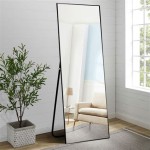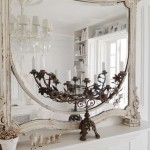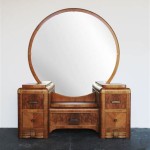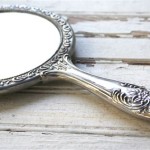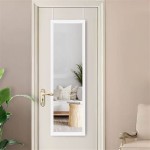How To Frame A Mirror With Wood Molding
Framing a mirror with wood molding is a simple yet elegant way to enhance its appearance and add a touch of sophistication to any room. Whether you are looking to create a rustic farmhouse aesthetic, a classic Victorian style, or a modern minimalist look, the right wood molding can transform your mirror into a focal point. This guide will provide you with a step-by-step process to frame a mirror with wood molding, from choosing the right materials to securing the molding to the mirror.
1. Choosing The Right Molding
The first step in framing a mirror with wood molding is selecting the appropriate molding. Consider the style of the mirror and the overall décor of the room you plan to place it in. For a classic look, opt for traditional moldings with intricate details and ornate patterns. For a modern aesthetic, choose minimalist moldings with clean lines and simple designs. When selecting your molding, consider its material, size, and profile. Here are a few popular options:
- Wood: Wood molding is a classic choice that offers a wide range of styles and finishes. It can be stained, painted, or left natural to complement the existing décor.
- Polystyrene: Polystyrene molding is a lightweight, affordable option that mimics the look of wood. It is available in various profiles and can be painted to match any color scheme.
- PVC: PVC molding is moisture-resistant and durable, making it ideal for bathrooms and kitchens. It comes in a range of colors and styles and requires minimal maintenance.
Once you have chosen your molding, measure the mirror carefully to determine the length and width required. Remember to add a few inches to the dimensions for the mitered corners. If you are using a pre-made frame, ensure it fits the mirror snugly. If you are creating a custom frame, you need to cut the molding to the correct size.
2. Preparing The Mirror And Molding
Before starting the framing process, ensure the mirror and molding are clean and free from dust or debris. Use a mild cleaning solution and a soft cloth to wipe down the surface of both. This will prevent any dirt or residue from interfering with the adhesion of the molding. If you are using a pre-made frame, you may need to sand down any rough edges before attaching it to the mirror. If you are creating a custom frame, you need to miter the corners of the molding using a miter saw or a miter box.
3. Securing The Molding
There are various methods to secure the molding to the mirror, depending on the material of the molding and your personal preference. Here are some common methods:
- Adhesive: Applying a strong adhesive like construction adhesive or mirror-safe super glue to the back of the molding and pressing it against the mirror is a simple and effective option. Allow the adhesive to dry completely before handling the framed mirror.
- Nails or Brads: For a more secure and permanent solution, you can use small nails or brads to attach the molding to the mirror. Be careful not to apply too much force, as this could crack the mirror. Use a hammer and a nail set to drive the nails flush with the surface of the molding.
- Clips: For easy removal and versatility, you can use clips to secure the molding to the mirror. These clips come in various sizes and materials and can be easily attached and detached without damaging the mirror.
- Frame Clamps: If you are using pre-made frames, frame clamps are an excellent option for attaching the molding to the mirror. These clamps apply pressure to the frame and prevent it from moving until the adhesive sets.
When applying the molding, start with the bottom piece and work your way up. Ensure the mitered corners are aligned perfectly and that the molding is flush against the mirror's edge. Use a level to ensure the frame is straight and even. If you are using adhesive, press firmly on the molding to ensure it adheres to the mirror properly. Once the molding is in place, allow the adhesive to dry completely before hanging the framed mirror.
4. Finishing Touches
After the molding is secured, you can add finishing touches to enhance the look of your framed mirror. This may include:
- Painting or Staining: If you chose unfinished wood molding, you can paint it to match your decor or stain it to create a natural wood finish. Ensure the paint or stain is compatible with the material of the molding. Allow the paint or stain to dry completely before hanging the framed mirror.
- Decorative Hardware: Add decorative hardware like hooks, D-rings, or picture wire to the back of the frame for hanging.
- Glass Protective Film: Apply a protective film to the front of the mirror to prevent scratches and dust buildup. This film can be easily removed if needed.
Once the finishing touches are complete, you can hang your framed mirror proudly on your wall. Choose the appropriate hanging hardware and ensure the mirror is securely attached to the wall before placing any decorative items around it. Take your time to appreciate the beauty and elegance of your newly framed mirror.

Adding Wood Trim To Our Vanity Mirror 10 Diy Growit Buildit

How To Build A Wood Frame Around Bathroom Mirror Young House Love

How To Frame A Mirror Sand And Sisal

Easy Diy Tutorial Adding Trim Around A Giant Mirror For Ers

Adding Wood Trim To Our Vanity Mirror 10 Diy Growit Buildit

Framing Those Boring Mirrors Southern Hospitality

How To Make A Diy Mirror Frame With Moulding Home

Adding Decorative Trim To Frame

How To Frame A Mirror

How To Build A Wood Frame Around Bathroom Mirror Young House Love


